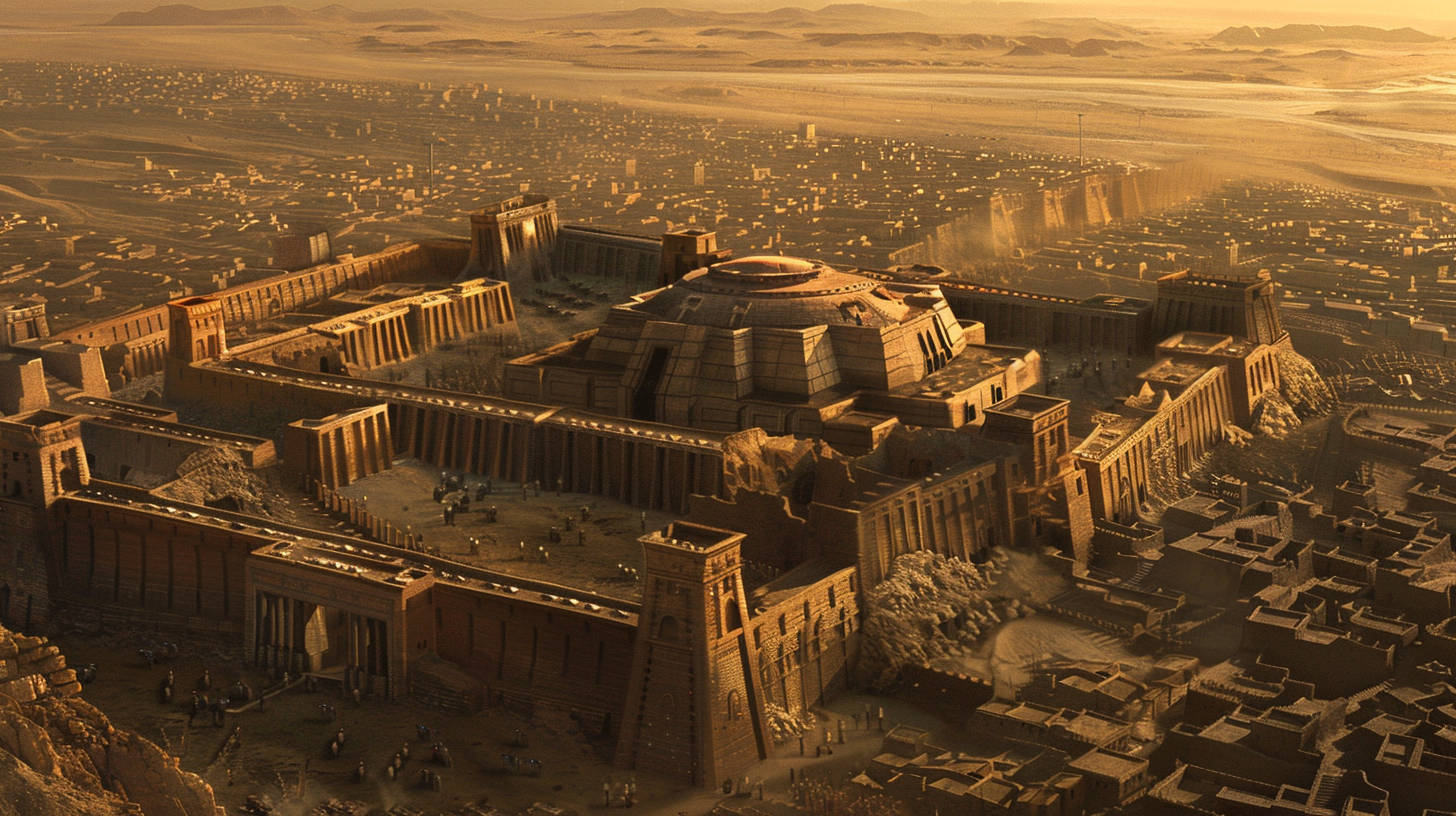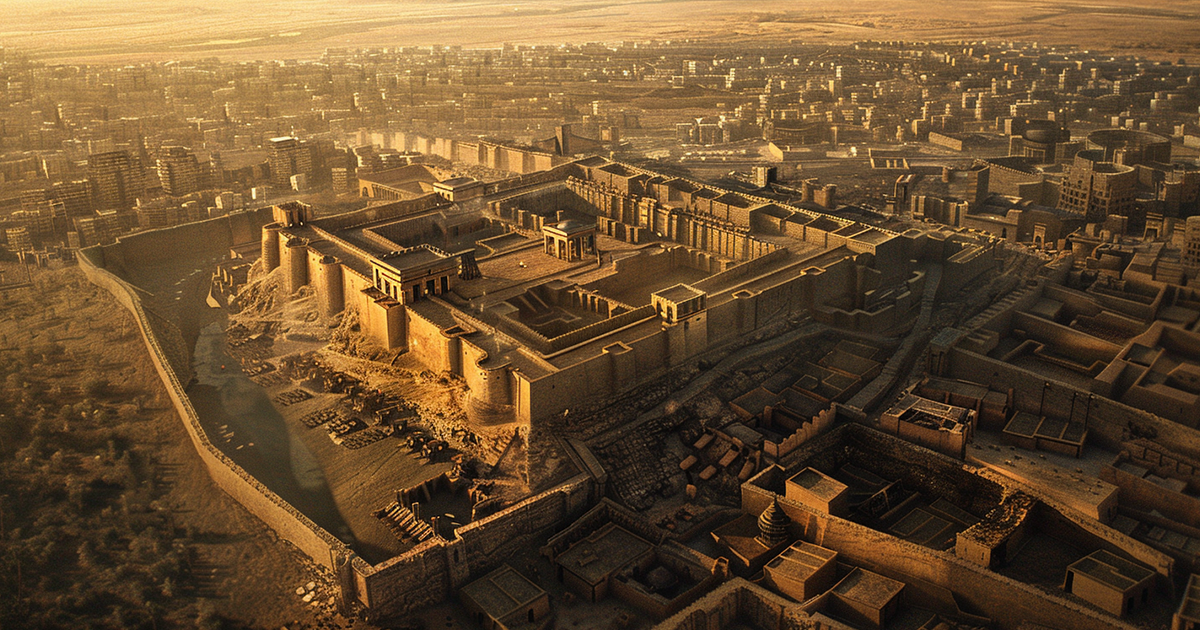Reflecting on the enigmatic Sumerians who dwelled in Mesopotamia evokes a sense of awe at their urban planning prowess and architectural innovations. The configuration of Sumerian cities, like Ur, has been a subject of fascination and speculation, hinting at a potential alignment with celestial entities. Could it be that the Sumerians, with their profound cosmological insights, encoded celestial symbolism into their urban landscapes to bridge the realms of Earth and the divine?
Central to the discourse is the layout of ancient Sumerian cities, characterized by a grid-like arrangement featuring straight avenues and intersecting pathways. Ur stands out as a prime example, a thriving metropolis of ancient Mesopotamia. Uncovering the city’s remains has unveiled a meticulously planned cityscape, with streets positioned in precise cardinal orientations and structures exhibiting impeccable symmetry.
Advocates of the hypothesis suggesting a cosmic reflection in Sumerian urban layouts argue that these patterns were intentionally designed to mirror celestial marvels on Earth. They emphasize the positioning of streets in alignment with celestial landmarks, such as stars, planets, and constellations, as supporting evidence for celestial influence. Under this perspective, the urban design of Sumerian cities aimed to establish a symbolic bridge between the human realm and the celestial hierarchy.

Besides the street alignments, scholars have identified architectural elements within Sumerian cities that further bolster the celestial conjecture. For instance, the ziggurat, a towering stepped temple prevalent in Sumerian urban centers, has been likened to a cosmic peak reaching towards the skies. Placing these structures at the heart of city grids hints at a symbolic correlation between earthly existence and the celestial realm.
Furthermore, proponents of the celestial influence theory underscore the cultural significance of astronomy in Sumerian society. The Sumerians were avid stargazers who meticulously tracked celestial movements, developing advanced astronomical methodologies and documenting their observations in cuneiform writings. Given their veneration for the heavens, it seems plausible that their urban design echoed celestial symbology as a reflection of their cosmological convictions.
However, skeptics propose alternative rationales for Sumerian urban layouts, positing that pragmatic considerations, rather than celestial influences, dictated urban planning decisions. They contend that the grid-like structure of Sumerian cities possibly aimed at enhancing organization and administration, facilitating commerce, transportation, and communication within urban hubs.
Moreover, critics caution against projecting contemporary interpretations onto ancient civilizations, highlighting our limited comprehension of Sumerian culture and beliefs. In the absence of direct proof linking Sumerian urban layouts to celestial symbolism, the hypothesis of celestial influence remains speculative.
Another viewpoint on Sumerian urban layouts suggests that they functioned as microcosms of the cosmos, reflecting the Sumerians’ worldview and comprehension of the universe. Here, the grid-like pathways and central temples symbolize the structured order of the cosmos, with the ziggurat serving as a conduit between the terrestrial and celestial domains.
In conclusion, the discourse surrounding Sumerian urban layouts and their purported celestial influence showcases the enduring allure of ancient civilizations and their architectural accomplishments. Whether intentionally aligned with constellations or not, these cities endure as a testament to human creativity and the perpetual quest to grasp our position in the cosmic tapestry. As we delve deeper into the study and interpretation of these ancient urban landscapes, one certainty remains – the mysteries of the ancient Sumerians persist in kindling wonder and inquisitiveness, beckoning us to explore the connections bridging the mundane and the celestial.
